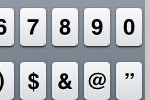I’ve written different variations of this article at least four times over the last ten years. (With luck, I won’t lose this one, too.) For those who may be confused, I offer a quick note on dashes.
There are two basic dashes—the em dash and the en dash:
em dash (—) its name derived from its length being equivalent to a lowercase “m”
The em dash is used as a hard pause or break in thought, or for parenthetic emphasis.
Examples: “When I was eight years of age, I saw Star Wars eight times within a one month period—mom wasn’t thrilled.” “There are many people who don’t care about—or even know about—what’s going on with your latest novel. ”
It is often thought of as the Replacement Punctuation Mark Of Choice for the semicolon—though, in some instances, they may be used in tandem when multiple pauses are needed, but aren’t parenthetic.
Example: “It was hard to imagine feeling so alone in a city of millions—so alone that each heartbeat seemed to echo through the streets; beating her name in Morse Code.”
Note: The Chicago Manual of Style does not employ spaces around dashes, which I prefer, it feels more “typeset” to me. Others like to leave a space on either side — like so. Either way is acceptable. Shorctuts: Mac: option-shift-hyphen PC: alt-0151 HTML: — iPhone: hold down the hyphen and it will pop up
en dash (–) its name derived from its length being equivalent to a lowercase “n” Application of the en dash is simple—it means “through.”
Examples: “2009–2010” “Mon–Thurs” “pp. 58–69”
Mac: option-hyphen PC: alt-0150 HTML: – iPhone: unavailable (unless you turn the Japanese Keyboard enabled)
After reading this, one should never have to employ two hyphens as a dash ever again. (Or, worse—a single one.) Nothing drains the professionalism from your writing faster than bad punctuation and grammar.
Share:
Elsewhere


